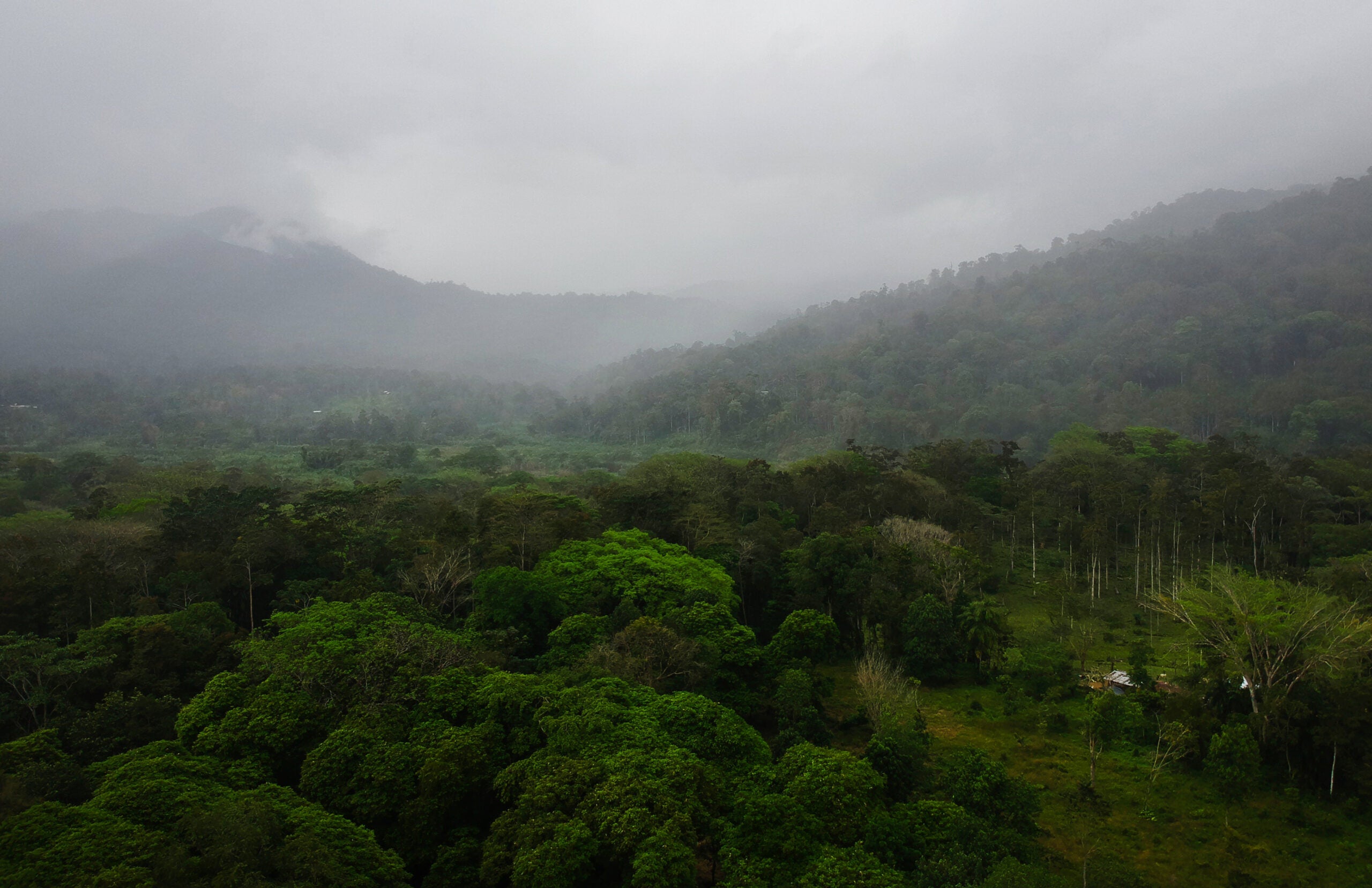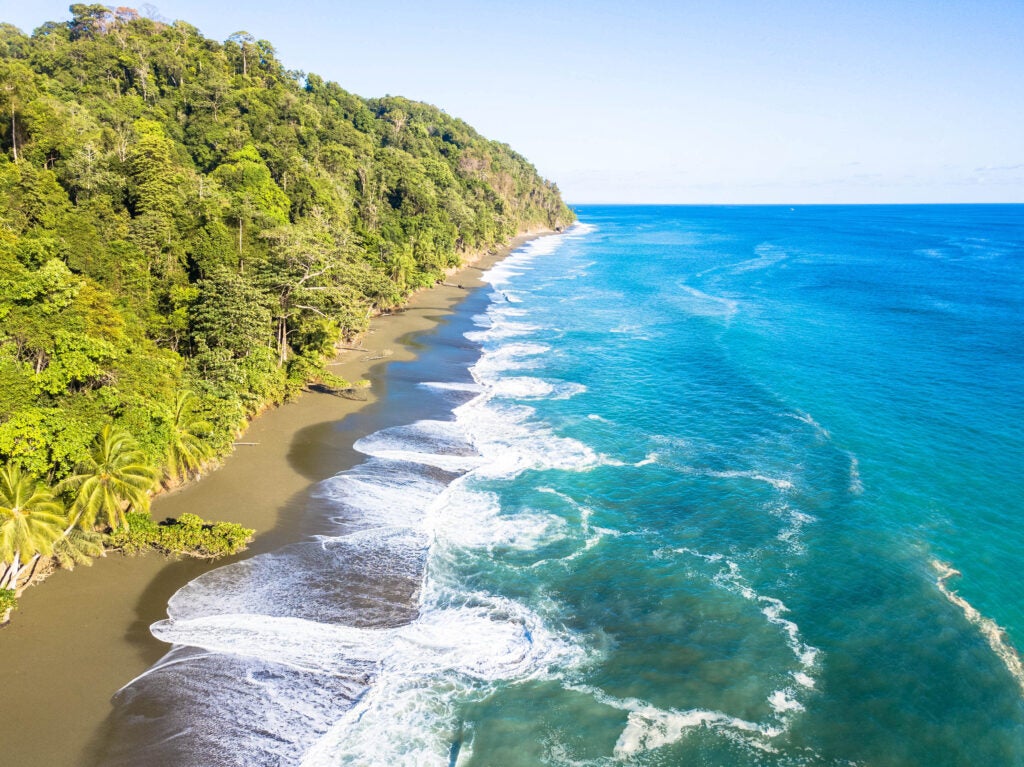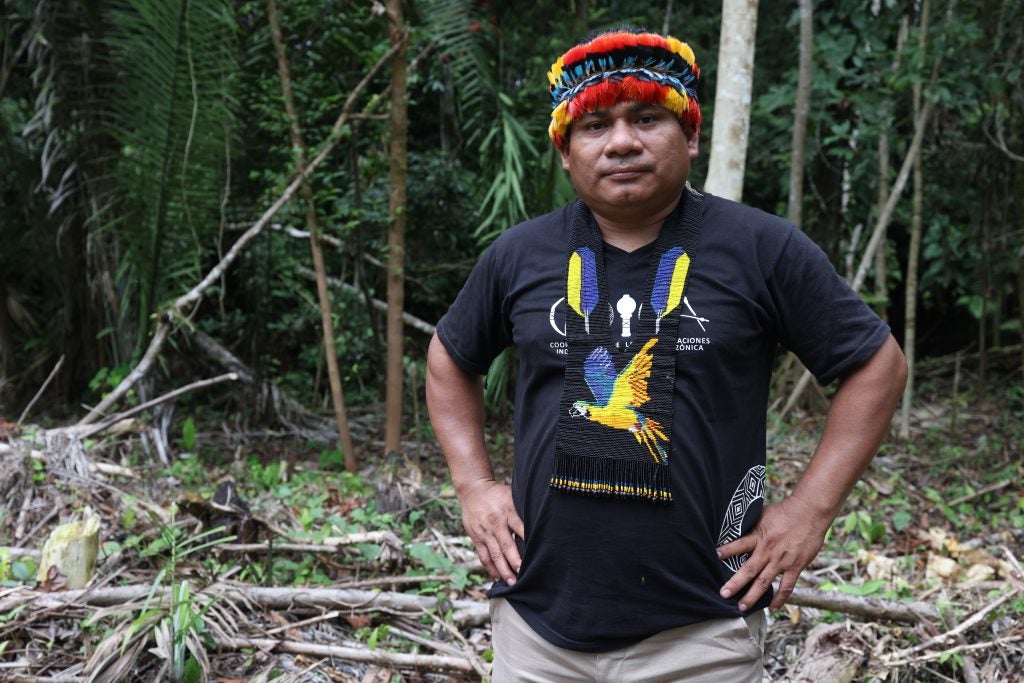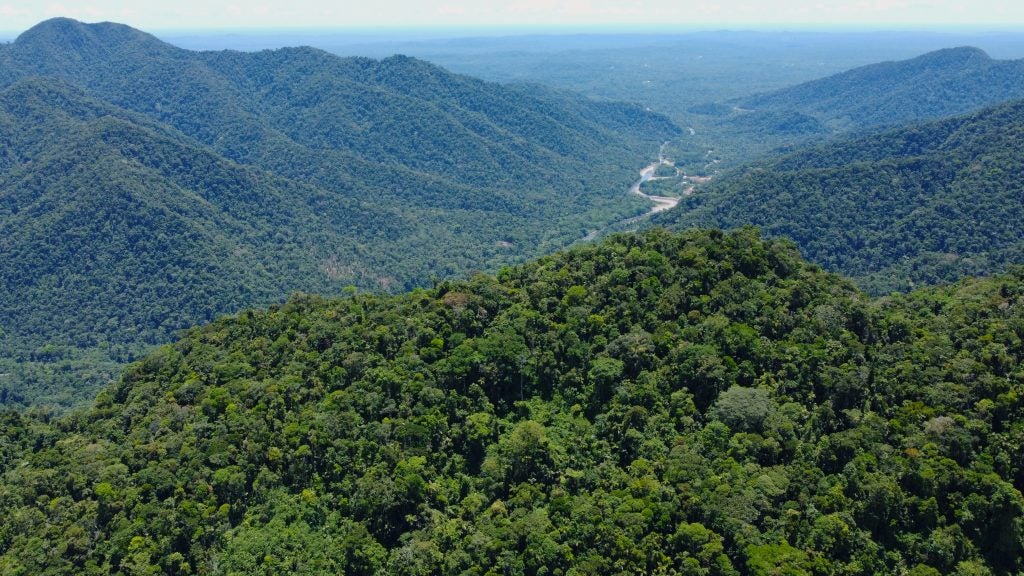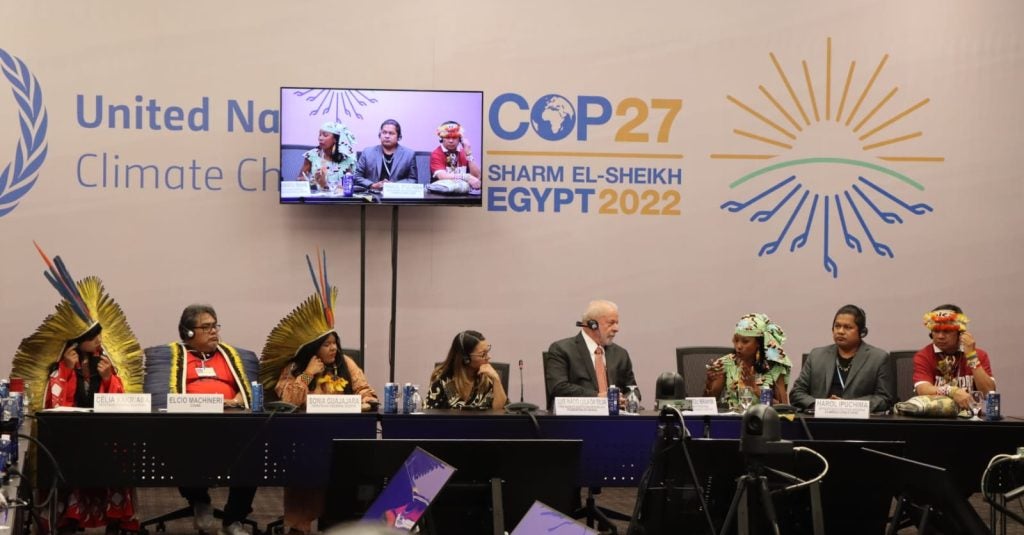This blog is co-authored by Sergio Sánchez, Senior Policy Director of Global Clean Air; Edgar Godoy, Associate Vice President of Jurisdictional Partnerships; Santiago Garcia, Indigenous Peoples and Local Communities Relationships Manager; and Erica Cunningham, AVP of Latin American Fisheries and Oceans.
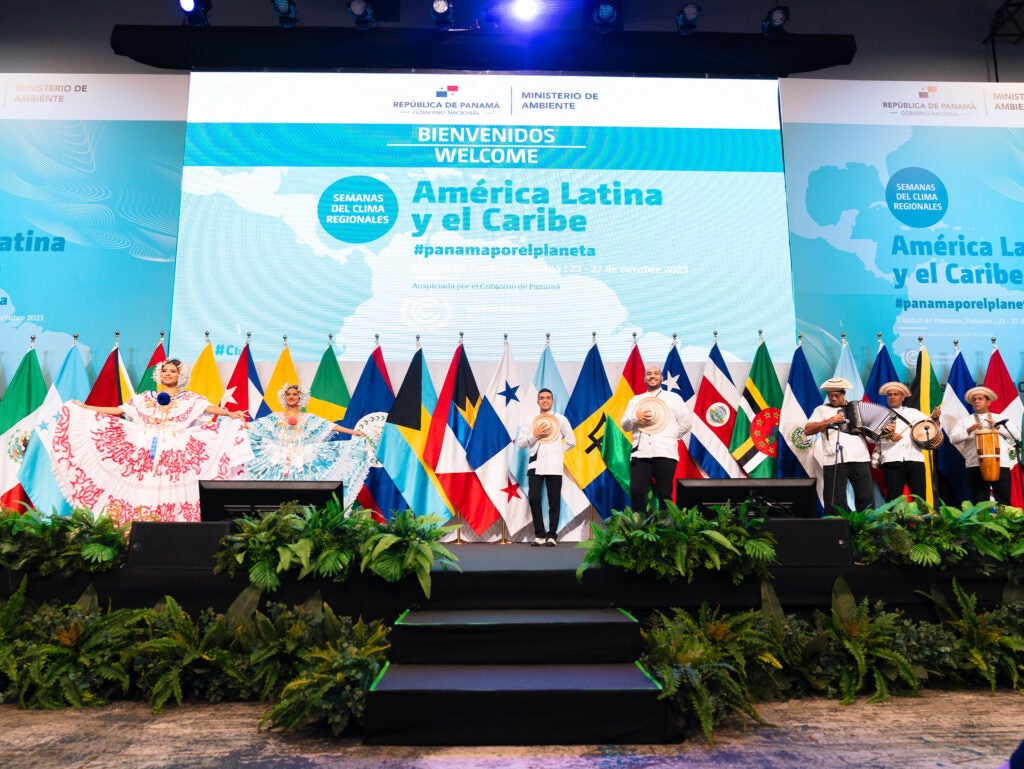
Scene from the Latin America and the Caribbean Climate Week 2023 opening ceremony. UNclimatechange via Flickr.
This week leaders and climate stakeholders from throughout Latin America are meeting in Panama to discuss climate action, and the strategies and finance needed to climate-proof the continent. It’s not an easy task in a region facing multiple challenges, from political instability to insecurity to stunted economic growth in many countries.
Climate change is already making life even more challenging for many vulnerable people in Latin American and Caribbean. Communities throughout the region are grappling with sea-level rise and extreme weather events that occur more frequently. The largely man-made destruction of natural resources, like the Amazon rainforest, will intensify the impacts of climate change, and the impact of climate change is creating further pressure in the ecosystems and their degradation. Yet enforcement of conservation efforts alone is not enough for a problem that is economic in nature.
Mitigation and adaptation strategies will look different from country to country in this highly diverse and mega biodiverse continent. However, they all share some common threads: the need for climate finance, capacity building, and technology transfer, among others.
The opportunity for climate action
A successful climate strategy for Latin America will also solve other problems. Efforts to conserve the region’s rich natural ecosystems must happen alongside efforts to safeguard vulnerable communities against climate impacts. At Latin America and the Caribbean Climate Week, the region’s leaders and climate stakeholders will have the opportunity to collaborate and advance discussions on climate policies that address multiple issues for both mitigation and adaptation. Climate financing, both from rich countries and the private sector, will need to be scaled up for solutions to work.
EDF’s delegation at Climate Week will engage and collaborate with the region’s climate leaders from government, civil society, Indigenous and local communities and other stakeholders, on critical topics including clean air, forest conservation, food security, and resilient oceans and coastal communities.
Read More »










